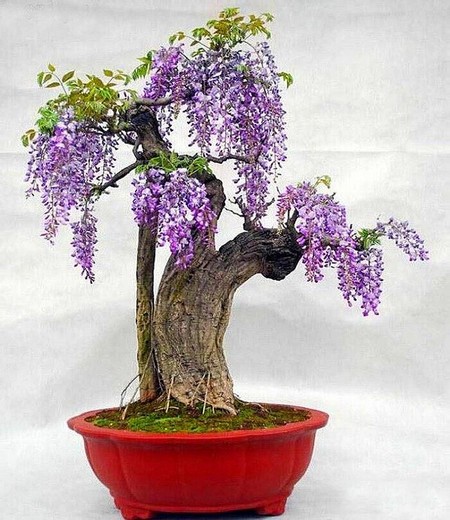Pruning and reshaping technique of Pushu bonsai
Pushu is commonly distributed wild in the hills and low mountains and valleys of the Yangtze River basin and its south. It can dig the sprouting old piles of Gucci which have been cut down for many years to "raise embryos". After pruning, the root system is developed, new branches are sprouted, and then shaped and cultivated, and then processed in the basin after 2 years, which can be made into vigorous and simple bonsai in a relatively short period of time.
The branch of the pile excavated in the field is thicker, and the method of pruning Lingnan high branch is mainly, combined with the method of flat binding with metal wire as the auxiliary method.
The pruning shape of Magnolia lanceolata should be based on the principle of supporting and pulling, flat binding as the auxiliary and pruning as the second. The pruning of Pushu should be based on the guiding ideology of suppressing the strong and helping the weak, adjust and control the balanced growth of branches, and promote the uniform distribution of nutrients.
When the new branch does not reach the coarseness, do not rush to prune, should allow its growth to accelerate the branch thickening, to achieve the coarseness of the branch pruning should retain certain branches and leaves, in order to prevent shrinkage.
In principle, Pu Shu did not do pruning at that time, allowing it to grow wildly, which was beneficial to promoting rooting and thickening branches. Only after falling leaves in late autumn, the trees were properly removed from useless buds, balanced branches were cut off, and branches were simply pruned to adjust the direction of branches and guide the growth and development of branches.
The growth rate of the tree is fast, the branches grow upright, the softness is poor, and there is no change. The tree grows thicker in the second year after survival, and pruning and banding during the growing period is very important. When the branches reach a certain thickness, they should be pruned and tied in time.
Time: 2019-06-12 Click:
- Prev

Cultivation method of potted plant of Celtis sinensis
Celtis sinensis is widely produced in Huaihe River, Yellow River Basin, south of Qinling Mountain, Guangdong, Guangxi and other regions of the country. It is mostly scattered in villages, rivers, Tianjiao and hillsides in plain and low mountain areas. Due to the wide adaptability of Celtis sinensis materials, easy seedling, long life, rough trees, old quaint chic
- Next

Propagation method of wisteria bonsai
Wisteria is a perennial woody vine of the genus Wisteria in Leguminosae. The flower is purple, the florescence is 46 months, the raceme is drooping, the pod is flat, long and ornamental. Wisteria can be propagated easily by sowing, cutting, striping, splitting, grafting and other methods, mainly by sowing and cutting.
Related
- Fuxing push coffee new agricultural production and marketing class: lack of small-scale processing plants
- Jujube rice field leisure farm deep ploughing Yilan for five years to create a space for organic food and play
- Nongyu Farm-A trial of organic papaya for brave women with advanced technology
- Four points for attention in the prevention and control of diseases and insect pests of edible fungi
- How to add nutrient solution to Edible Fungi
- Is there any good way to control edible fungus mites?
- Open Inoculation Technology of Edible Fungi
- Is there any clever way to use fertilizer for edible fungus in winter?
- What agents are used to kill the pathogens of edible fungi in the mushroom shed?
- Rapid drying of Edible Fungi

